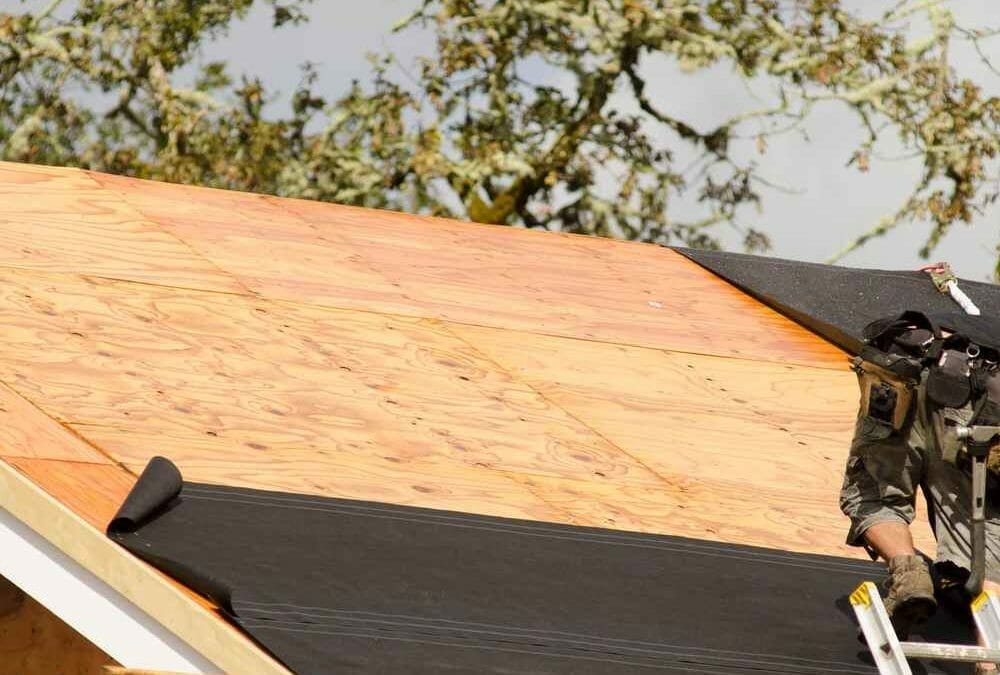Water is one of the most fundamental elements on Earth. Humans, animals, and plants alike cannot survive without water. But as life-giving as water can be, it can also do some pretty destructive things too. Just think about how major rainstorms and floods sweep through an area so quickly, causing widespread destruction before disappearing as quickly as they arrived.
When it comes to your home’s roofing system, water isn’t something you want to welcome. Overexposure to water and moisture can lead to the growth of moss and mold, the deterioration of your roof’s structures as well as create leaks in your home.
Roofing systems have many features that keep water from damaging your roof and getting into your home, including your gutter system, roof flashing, and underlayment.
Your roof underlayment is essentially the last line of defense against water before it begins to affect your roofing structure. The roof underlayment is installed directly on your roof deck, and it prevents water from seeping through your roof deck and into your home. The underlayment can be made from varying materials, each offering your home different advantages.
At Elo Roofing, we install premium roofing underlayments that help to prevent water from penetrating the interior of your home. These are some of the roofing underlayment materials available to you:
Felt Underlayment
When it comes to felt underlayment, you can expect a tried and true material with decades of history. Made from asphalt-saturated paper or fiberglass mat, this water-resistant solution is perfect for homeowners looking for an affordable waterproofing option that won’t leak easily.
Felt underlayment is available in two types, No.15 and No.30. No.30 is the option most preferred by homeowners and roofing contractors as it is stronger, thicker, and less likely to be torn or ripped apart by extreme weather conditions.
During its installation, the underlayment should not be placed in the sun for too long as this can lead to it leaching oils and drying out. If you aim to install a slate or tile roofing system on top of the felt underlayment, you may want to reconsider as these roofing materials are too heavy for an already heavy material like the felt underlayment. The combination of these roofing materials will likely place significant strain on your roofing structures.
Synthetic Underlayment
While felt underlayment is the old faithful material option, more and more roofers and homeowners opt for synthetic roofing underlayment. Synthetic underlayment is often made from polymers. These polymers are long-lasting, provide added strength and durability to the underlayment, and are much easier to install.
If efficient water-repelling is what you’re looking for, then synthetic underlayment is the way to go. The material easily sheds any water that comes into contact with it, unlike felt underlayments that warp when overexposed to water and moisture.
However, this excellent roofing material does come at a costly price. However, its price can be justified thanks to its longevity and ease of installation.
Granular Underlayment
Granular underlayment is referred to as self-adhered underlayment. This is because they’re manufactured with an adhesive that allows them to stick to your roofing deck without adding any nails or fasteners.
Granular underlayment is an innovative material that combines rubberized asphalt with a layer of fiberglass. It’s made from sand or minerals and offers homeowners fantastic durability and strength as well as being slip-resistant, making it easy for roofers to navigate across them.
Their affordability is what makes them an attractive underlayment option, as well as their ease of installation. However, granular underlayments are pretty heavy and tend to soften when the temperature increases. After prolonged sun exposure, the granules on your underlayment can come loose and fall off, leaving your roof deck exposed to the elements.
For information on underlayments or roofing in general, don’t hesitate to call Elo Roofing!



